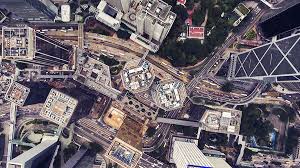Coronavirus tests coordinated development of China’s megacity cluster

Beijing: Zong Guoyou carries three documents in his daily commute to Beijing from home some 30 km away in the city of Sanhe, north China’s Hebei Province.
With a letter issued by his company, a health registration card and a pass of his community, the subway employee does not have to take a 14-day quarantine, which is usually needed following a trans-provincial trip amid the spread of the novel coronavirus disease (COVID-19), China Economic Net reported.
The three documents, part of the measures to battle the outbreak jointly by Beijing and the neighboring Tianjin Municipality and Hebei Province, not only strengthened the management of the numerous inter-provincial commuters but also helped restore the order of work, said Liu Lianjie, mayor of Sanhe.
Six years ago, China initiated a key strategy to coordinate the development of Beijing, Tianjin and Hebei — a regional city cluster called “Jing-Jin-Ji”– to create a model with a better economic structure, cleaner environment, and improved public services. The ongoing COVID-19 outbreak has put the coordination of the three places to the test.
At a meeting to advance the work on coordinating the prevention and control of COVID-19 and economic and social development on Feb. 23, Chinese leadership demanded both imported cases and spread within the city should be prevented in Beijing. Efforts were also required to carry out health monitoring and personnel management and strengthen joint prevention and control in the Beijing-Tianjin-Hebei region.
Li Qun, a courier truck driver who often travels between Tianjin and Beijing, is familiar with the strict measures.
“I need to scan a QR code to register my personal information, and my body temperature will be measured at least four times in one trip — before the departure, at the expressway entrance, at the city border and after unloading the cargo,” Li said.
Facing the massive passenger flow to Beijing, Tianjin and Hebei have played the role of “anti-epidemic moat” for the capital by inspecting vehicles and personnel in and out.
Since Jan. 26, Tianjin has initiated public security inspection in nine checkpoints on the roads leading to Beijing, which were guarded by police and medical personnel, said Sun Liankai, deputy chief of the Tianjin municipal public security bureau.
The treatment of the COVID-19 cases is also a priority under the joint mechanism.
Health authorities of the three places communicate with each other at least once a day and share epidemic information in the region, said He Peng, a spokesperson with the Tianjin municipal health commission.
Meanwhile, a remote diagnosis platform is in operation, allowing patients in critical conditions to receive long-distance diagnosis when necessary, he said.
Like other parts of the country, the region saw a large number of social workers, Party members and volunteers guarding communities and villages to make sure the infected cases are timely identified and the close contacts of the cases undergo quarantine.
The efforts have shown good results. By Thursday, only 876 people were infected in the Jing-Jin-Ji region with over 100 million population, compared with 12,960 confirmed cases on the Chinese mainland outside Hubei Province, the center of the outbreak.
Tan Xuxiang, director of Beijing Municipal Commission of Development and Reform, said the Jing-Jin-Ji region will gradually establish a formalized mechanism for joint prevention and control of public health incidents based on the existing measures amid the outbreak.
Under the coordinated regional development of Jing-Jin-Ji, many factories were moved out of Beijing to cap the population of the capital and treat the “urban ills” like traffic jams and pollution.
As positive signs start emerging in the battle against the epidemic, Beijing, Tianjin and Hebei have also joined hands to support enterprises back to gear by helping their upstream and downstream suppliers in the region to resume operation.
In Tianjin’s Jingbin Industrial Park, workers wearing masks have to verify their identity and get their body temperature checked before entering the workshop in the Hella Bhap (Tianjin) Automotive Lighting Co., Ltd, a supplier of the Benz factory in Beijing.
Wang Fahao, an executive of the company, said both production lines have been put into operation since Feb. 15, producing 6,000 sets of lamps every day.
At present, all 39 direct suppliers of the Beijing Benz have resumed operation in Tianjin, according to Sun Hujun, executive deputy director of the Beijing-Tianjin-Hebei coordinated development office of the Tianjin municipal government.
Chen Wei, executive vice-president of the Beijing Benz, said things were back on track in the factory as many of their providers had resumed the supply in time.
In Hebei Province, the suppliers of the Beijing-based tech giant Xiaomi and the Beijing factory of Chang’an Automobile have all resumed operation.
“Companies in different places can restore production coordinately as an industrial chain,” said Gao Min, an assistant researcher at the development research center of the State Council.
As of March 4, all epidemic prevention materials manufacturers in Beijing had resumed work. The resumption rate of industrial enterprises above designated size in Tianjin reached 88.9 percent by March 2, while that rate in Hebei was 92.5 percent by March 1.
At the Beijing Daxing International Airport, machines started roaring again at the construction site of the satellite terminal.
Some 4,000 construction workers cross the provincial and municipal borders every day to the site at the juncture of Beijing, Tianjin and Hebei.
Located to the south of the main terminal, the satellite terminal is expected to increase the passenger throughput from the current 45 million to 72 million by 2025.





